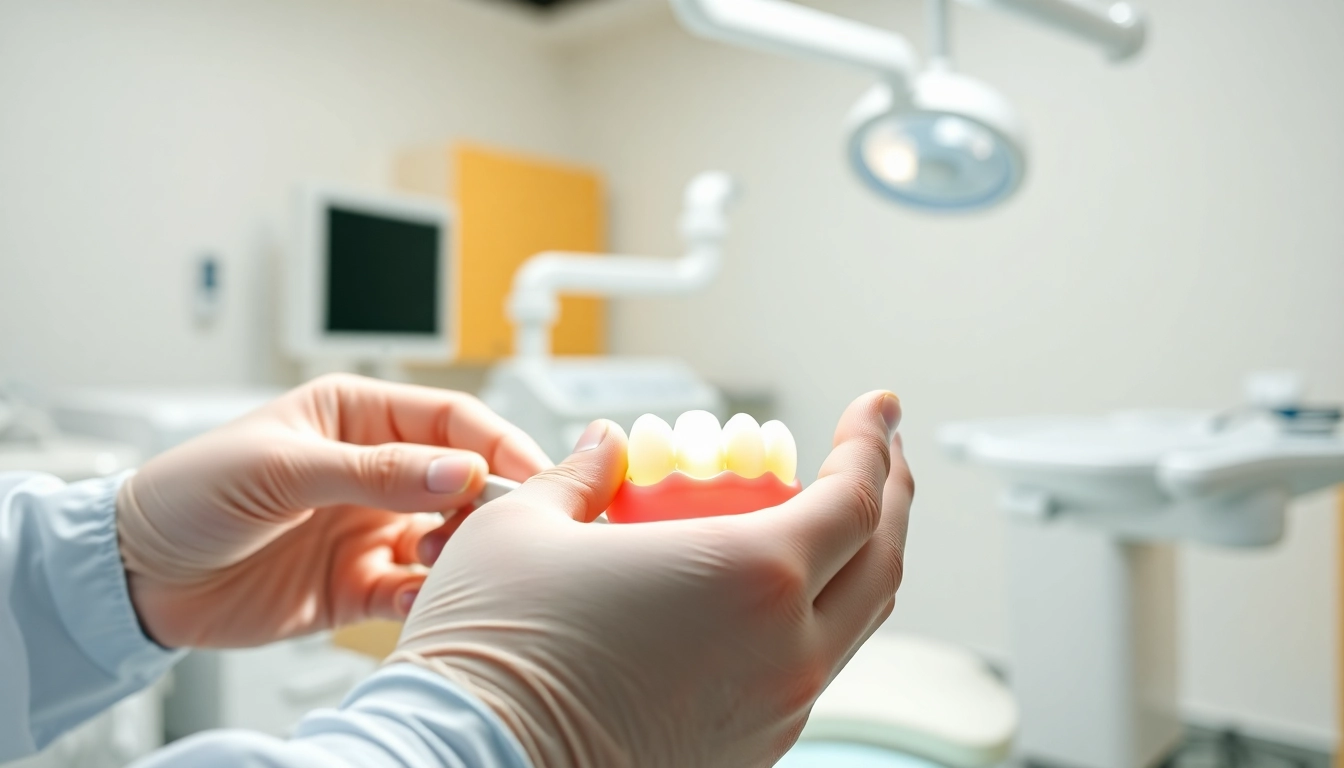What are Dental Bridges?
Definition and Purpose of Bridges
Dental bridges are prosthetic devices used to fill the gap created by one or more missing teeth. They are designed to “bridge” the space where teeth are absent, helping to restore the patient’s ability to speak and chew properly, and importantly, to maintain oral health. Bridges can prevent the remaining teeth from shifting into the empty space, which can lead to misalignment and further dental issues. Understanding the necessity of bridges becomes paramount for those considering options to replace lost teeth.
Components of a Dental Bridge
A typical dental bridge consists of two main components: the abutment teeth and the pontic. The abutment teeth are the natural teeth (or implants) that support the bridge. They are usually filed down to make room for the bridge. The pontic is the false tooth (or teeth) that replace the missing ones. Pontics can be made from various materials, including porcelain, gold, or a combination of materials, depending on the patient’s preference and the bridge type chosen.
Common Types of Bridges Available
There are several types of dental bridges, each serving different purposes:
- Traditional Bridges: The most common type, consisting of one or more pontics held in place by crowns on either side.
- Maryland Bridges: Also known as resin-bonded bridges, these use a metal framework with wings on each side that bond to the back of adjacent teeth.
- Screw-Retained Bridges: Attached to implants, providing stable support for both the bridge and the surrounding structure.
- Implant-Supported Bridges: Used when multiple teeth are missing, supported by implants rather than natural teeth.
Benefits of Dental Bridges
Restoration of Functionality
By replacing missing teeth, bridges restore essential functions like chewing and speaking, which can significantly enhance quality of life. Individuals with gaps in their teeth often encounter difficulties in these areas, affecting their confidence and social interactions. With a properly fitted bridge, patients can enjoy their meals without discomfort or anxiety.
Improved Aesthetic Appearance
One of the most significant benefits of dental bridges is the improvement in appearance. Missing teeth can lead to facial sagging and an aged look. Dental bridges help in maintaining facial structure and ensuring that your smile remains intact, which is crucial for personal and professional interactions.
Long-term Oral Health Advantages
Beyond functionality and aesthetics, dental bridges also contribute to the long-term health of your mouth. When teeth are missing, the remaining teeth may shift into the gap, leading to bite misalignment and further dental issues. Bridges help maintain proper alignment and spacing, significantly reducing the likelihood of tooth decay and gum disease.
Choosing the Right Type of Bridge
Evaluating Dental Needs
The choice of a dental bridge depends on numerous factors, including the number of missing teeth, the health of adjacent teeth, and the patient’s overall dental health. A thorough evaluation by a dental professional is essential to determine which type of bridge will work best for an individual’s specific needs.
Consultation with Your Dentist
Consulting with your dentist is a crucial step in the decision-making process. During this consultation, your dentist will assess your oral health, discuss possible options, and recommend the most suitable type of bridge. They will also provide insight into the materials used, costs involved, and the long-term implications of placing a bridge.
Getting an Estimate of Costs
The cost of dental bridges can vary greatly depending on the type chosen, the materials used, and whether additional dental work is needed (like crowns or implants). Patients should request a detailed estimate from their dentist that outlines all potential costs involved in the treatment.
Dental Bridge Placement Procedure
Step-by-Step Overview of the Procedure
The placement of a dental bridge generally includes several steps:
- Initial Consultation: Discussing options with the dentist.
- X-Rays and Impressions: Taking X-rays and making impressions of the teeth.
- Preparation of Abutment Teeth: Shaping the abutment teeth by removing some enamel to accommodate the crowns.
- Temporary Bridge Placement: Fitting a temporary bridge for protection until the permanent one is ready.
- Final Bridge Placement: Once the permanent bridge is crafted, the dentist will fit and securely cement it into place.
Post-Procedure Care and Instructions
After the dental bridge procedure, patients should follow their dentist’s post-operative instructions carefully. This usually includes avoiding hard foods for a few days, maintaining oral hygiene, and attending follow-up appointments to ensure proper bridge function and fit.
Pain Management and Recovery Tips
It is common to experience some discomfort after the procedure. Over-the-counter pain relievers usually suffice, but patients should consult their dentist if pain persists. Cold compresses can help reduce swelling and alleviate discomfort.
Long-Term Care for Your Dental Bridges
Routine Maintenance Practices
Maintaining a dental bridge involves regular dental check-ups and good oral hygiene practices. Brushing twice daily and flossing around the bridge is essential to prevent plaque buildup and gum disease.
Signs of Wear and When to Consult Your Dentist
If patients notice any discomfort, looseness, or visible wear on their bridges, they should contact their dentist immediately. Early intervention can help prevent more severe problems down the line.
Toothbrush and Flossing Tips Specific to Bridges
For patients with dental bridges, using a soft-bristled toothbrush and fluoride toothpaste can help protect the bridge and surrounding teeth. Specialized dental cleaning devices, such as interdental brushes or floss threaders, can also make cleaning around the bridge easier.



